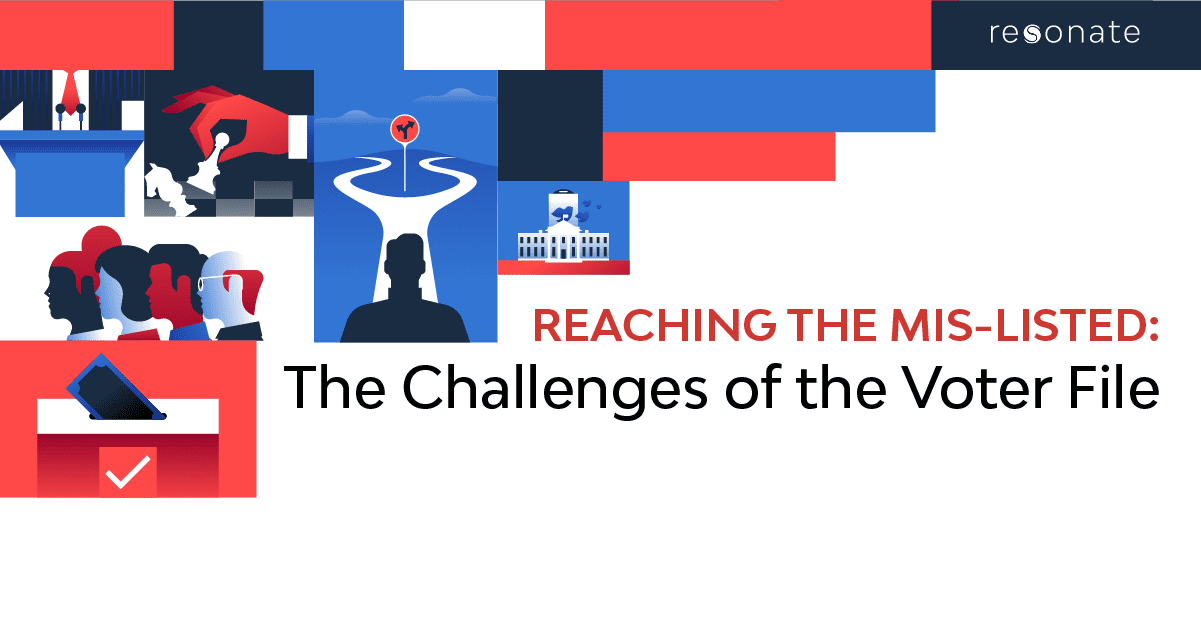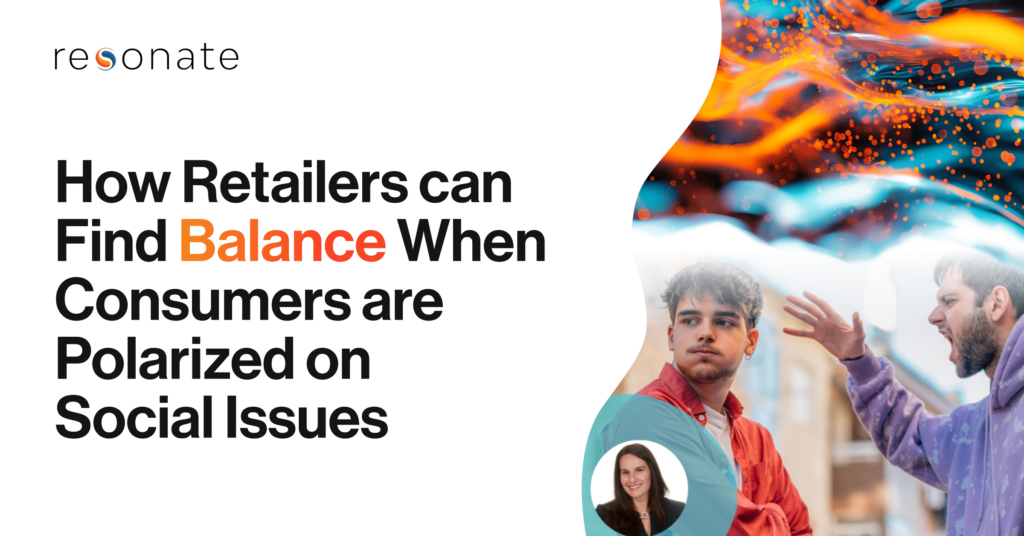The Florida recount and ensuing litigation in the 2000 Presidential Election sparked widespread doubt in the electoral system. As a result, Congress passed the Help America Vote Act (HAVA). As part of HAVA, each state was required to maintain a digital database of all legally registered voters; introducing the state voter file.
HAVA was a gift to campaigners. In the 2004 Presidential Election, savvy operatives figured out not only how to combine all 50 state voter lists into one national file, but to model the voter data with commercially available consumer data.
So, instead of just being able to understand voters based on their voter file attributes like political party or their likelihood to vote, campaigns could now unlock hundreds of other consumer-based insights like the magazines they read or even the car they drove! Sure, these may seem like pretty basic models nowadays, but at the time it was a big deal.
For the first time in history, cutting-edge operatives like Karl Rove were using data and analytics to engage voters 1:1, targeting their households with visits, mailers, and phone calls all aimed at empathizing with the issues and interests that mattered to that individual voter; introducing micro-targeting.
Fast forward four years, and campaigns and analytics changed political marketing forever when a presidential candidate from Illinois recognized the power of the internet and built social media insights into voter models.
The 2008 Obama campaign created an arms race for the most accurate and sophisticated voter models on the market, and in the process exposed major challenges associated with voter files that modern campaigns are still grappling with today, whether they know it or not…
The modern challenges with voter files
Challenge 1: Residential mobility
It wasn’t until 1865 that property ownership was no longer a barrier to register to vote in America, although the fact that registration is still tied to an address rather than an actual person is problematic.
The American Political Science Association (ASPA) recently published research, Politically Invisible in America, which found that 12% of the adult population is actually mis-listed on voter or consumer files (i.e., not living at their recorded address).
What’s more interesting is that two-thirds of this mis-listed audience are, in fact, registered to vote, but at an address where they do not currently reside. That’s roughly 17M registered voters that campaigns are completely missing if they’re relying on household-level data found in voter files.
The ASPA research found that high rates of residential mobility and low rates of homeownership are driving these inaccuracies. And, while an eye-opening 20% of the entire mis-listed population is either Black or Hispanic, 52% of whites also reported residing at their current address for less than 10 years.
The fact is this type of residential mobility can affect any electoral segment: wealthy, poor, Black, white, or Hispanic. Americans move, which means voter files need to be continuously updated. Currently, there is no standard process by which election offices across states are informed when a voter relocates.
The research also found that 33% of registered mis-listed people who voted in 2008 reported being contacted by a campaign in 2012, compared to 52% of correctly-registered people who voted in 2008. This major gap proves it’s hard to hit a moving target when your data is derived from a static source.
Challenge 2: Limited data – major inaccuracies
The only information required on every state’s voter file is name and address data. But as previously covered, this information is most often appended with publicly available consumer data from any variety of sources to help make more informed predictions about an individual voter. The problem here: If any single component of these models is built using stale, poor, or dubious data sources, then the model’s integrity is immediately sacrificed.
For example, consider that only about half of state voter files list an individual’s party affiliation. For the other half, voter file vendors need to rely on other data sources to make party affiliation predictions.
At Resonate, we put a nationally modeled voter file to the test. By using party affiliation as our benchmark, we compared the modeled voter file against our self-reported party affiliation data (online users who self-attested their party affiliation). Specifically, we looked at voter data from the 2012 and 2016 elections. In total, we found 7.1M Democrats and 5.4M Republicans from the voter file models who self-reported as a member of the opposite political party. Depending on which campaigns were spending, that’s roughly 12M total voters wasted.
Challenge 3: On-boarding the voter file
When a modeled voter file is onboarded online, using household-level data rather than individual, you can still only expect a match rate of roughly 40-60%, meaning you’re missing 40-60% of the registered electorate. The absence of universal identifiers, like email addresses, linked to individual voters makes onboarding the voter file so challenging.
How to solve for voter file challenges
There undoubtedly remains value in the voter file and in many ways it remains the benchmark data set for campaigns. Perhaps its greatest value is turnout history, documenting an individual’s turnout from previous elections (midterms, presidentials, etc.) and providing insights on predicted future turnout. That’s very, very useful information.
At Resonate, we understand the intrinsic value of the voter file and that’s why we onboarded it to the Resonate Ignite Platform™ ourselves, but we also understand the very real challenges campaigns face with models purely built from offline data sources like voter files and commercial marketing lists.
That’s why we’ve enhanced the voter file with artificial intelligence to provide campaigns with a modern digital solution for truly understanding and targeting voters online with precision accuracy, at unrivaled scale. Want a peek? Request a demo.
How do we do it?
We start by running the nation’s largest continuous online voter survey to over 200k voters. This survey yields over 13k individual-level insights about each respondent, including their party affiliation, the candidate they’ll likely vote for, the issues they care most about, and so on. So, how is this different from voter file models?
Our process doesn’t stop with our surveys. We then run machine learning algorithms to combine the survey responses with tens of billions of web events each day – linked to those respondents – using natural language processing to understand the type of content that’s being consumed. See how it works.
In plain terms, we match the survey responses to the way that individual behaves on the internet, creating highly accurate three-dimensional models that update in real-time. We then push those models out to over 90% of the entire electorate online, yielding over 13k of the most relevant individual-level insights on almost every single U.S. voter on the internet.
Perhaps the most important part of our modern methodology is our models update every single night, which is what fundamentally separates us from static voter file models. By considering the online behavioral activity (tens of billions of web events each day) of each individual voter, our algorithms can pick up the smallest changes in voter sentiment as they occur, including changes in candidate preference, likelihood to vote, life stages, etc.
Our models are also linked to the individual and not household-level data, which solves for the most fundamental challenge associated with voter files, and identifying and reaching mis-listed individuals.
For example, remember the party affiliation exercise we ran, comparing our self-attested party affiliation models against the party affiliation data on a leading voter file? We found over 12M voters from the 2012 and 2016 elections who were listed as one party on the voter file model, but self-attested they identified with another party in our surveys. How could that happen?
The fact is voters change their party affiliation all the time. Party affiliation, top issues, candidate preference: voter sentiment is a continuous sliding scale that needs to be monitored daily, not every two to four years.
Unlike moment-in-time research that only records a voter’s sentiment on that particular day, our behavioral models continually track voters across an entire election cycle, accounting for individual-level shifts in real-time and allowing campaigns to activate on them immediately.
This methodology was critical to the Resonate Ignite Platform™ predicting the 2016 and 2020 elections, capturing seismic voter sentiment shifts amongst white working-class voters in key swing states in the final days, shifts that static research from previous weeks could have never seen.
As the research in ASPA states, “Indeed, the use of commercial voter files—and the analytics technologies they enabled—became such a central part of Hillary Clinton’s 2016 campaign that journalists conjectured that the overuse of these data was a factor in her loss—a critique unimaginable for a presidential campaign only 12 years before”.
The takeaway
The modern campaign operative needs a strategy that goes further than one-dimensional predictive modeling, such as browsing activity or 3rd party consumer data, to truly understand their target audience and optimize their finite targeting resources.
With today’s technology, campaigns can overcome the obstacles associated with the voter file by supplementing their offline files with sophisticated lookalike modeling strategies and alternative methodologies that can provide true 1:1 analysis and targeting, eliminating waste and ensuring real, emotional connections with each individual voter.
The Resonate Ignite Platform™ is the remedy to voter file challenges – request a demo today.



